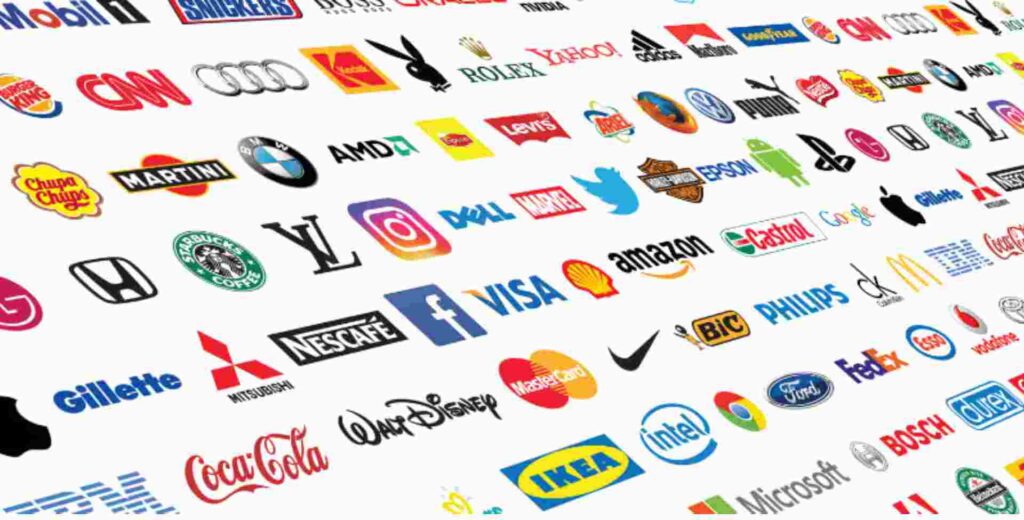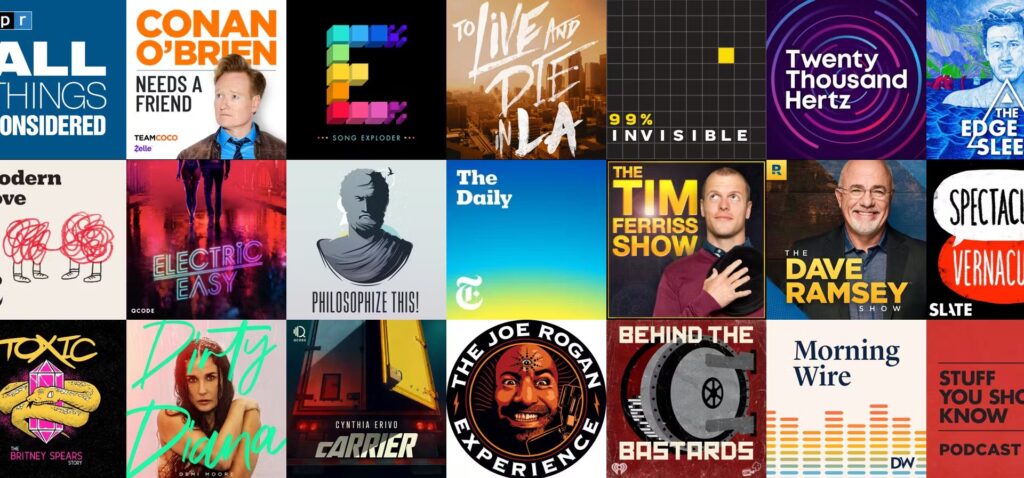Logos are more than just symbols; they are powerful tools that represent a brand’s identity, values, and mission. Some famous logos have become so iconic that they’re recognized worldwide. But did you know that behind these logos, there are intriguing stories and hidden meanings? In this blog, we’ll dive into 20 famous logos and share 20 fun facts that make them even more interesting.
1. Apple
Fun Fact: The Apple logo wasn’t always the sleek, minimalist design we know today. The original logo, designed in 1976, depicted Sir Isaac Newton sitting under an apple tree. The now-famous bitten apple was introduced later in 1977 and symbolizes knowledge.
2. Nike
Fun Fact: The iconic Nike “Swoosh” was designed by a graphic design student, Carolyn Davidson, in 1971. She was paid just $35 for her work. Today, the Swoosh is one of the most famous logos in the world, symbolizing speed and motion.
3. McDonald’s
Fun Fact: The golden arches of McDonald’s are more than just a logo—they’re a symbol of American culture. The design was inspired by the architecture of the first franchised McDonald’s restaurant in 1952. The arches were later stylized into the “M” we see today.
4. Coca-Cola
Fun Fact: The Coca-Cola logo has remained almost unchanged since it was created in 1886. The script font, known as Spencerian script, was popular in the United States at the time. This logo is one of the most famous logos globally and has become synonymous with refreshment.
5. Amazon
Fun Fact: The Amazon logo’s arrow that points from “A” to “Z” has a double meaning. It represents that Amazon offers everything from A to Z and also forms a smile, reflecting customer satisfaction.
6. Starbucks
Fun Fact: The Starbucks logo has undergone several transformations since its inception in 1971. The original logo featured a siren with two tails, which was inspired by an old marine book. The current design still features the siren but is much more simplified.
7. Google
Fun Fact: The Google logo is one of the most recognized famous logos today, but it started as a simple wordmark. The primary colors used in the logo—blue, red, yellow, and green—are meant to convey the company’s playful and innovative nature.
8. FedEx
Fun Fact: The FedEx logo has a hidden arrow between the “E” and “X,” symbolizing speed and precision. This subtle design element has earned the FedEx logo numerous design awards and recognition as one of the most famous logos in the world.
9. Mercedes-Benz
Fun Fact: The Mercedes-Benz logo—a three-pointed star—represents the brand’s ambition to dominate land, sea, and air. The star has become a symbol of luxury and engineering excellence.
10. BMW
Fun Fact: Many people believe that the BMW logo represents a spinning propeller, but it’s actually a nod to the company’s origins as an aircraft engine manufacturer. The blue and white colors in the logo represent the Bavarian flag, BMW’s home region.
11. Pepsi
Fun Fact: The Pepsi logo has undergone numerous changes since its creation in 1898. The current design, introduced in 2008, features a circle with red, white, and blue waves, symbolizing the brand’s dynamic and global appeal.
12. Walt Disney
Fun Fact: The Walt Disney logo is modeled after the signature of Walt Disney himself. However, it’s not an exact match. The logo was stylized to make it more visually appealing, and it’s now one of the most famous logos associated with childhood memories.
13. Adidas
Fun Fact: The three stripes in the Adidas logo originally came from a Finnish sports brand that Adidas founder Adi Dassler bought in the 1950s. The stripes were meant to symbolize the company’s focus on creating durable, high-performance footwear.
14. IBM
Fun Fact: The IBM logo’s stripes are meant to represent speed and dynamism. The logo has remained largely unchanged since 1972 and is a symbol of corporate strength and innovation.
15. Shell
Fun Fact: The Shell logo is one of the most famous logos in the oil and gas industry. The shell symbol comes from the company’s origins in selling seashells and kerosene. The logo has evolved from a realistic shell to the stylized version we see today.
16. Microsoft
Fun Fact: The Microsoft logo features a simple, four-colored window, symbolizing the brand’s diverse product offerings. The colors—blue, green, yellow, and red—represent the company’s dedication to creativity and innovation.
17. Sony
Fun Fact: The Sony logo is minimalist yet powerful. It has remained consistent since 1973, reflecting the brand’s commitment to quality and simplicity. The word “Sony” itself is derived from the Latin word “sonus,” meaning sound, and the English word “sonny,” meaning little son.
18. NBC
Fun Fact: The NBC logo, featuring a peacock with colorful feathers, symbolizes the company’s history with color television. Each feather in the logo represents one of NBC’s divisions, and the peacock is a nod to the network’s motto, “Proud as a Peacock.”
19. Nike
Fun Fact: Did you know that Nike’s Swoosh logo was inspired by the wings of the Greek goddess Nike? The logo represents victory and has become synonymous with sports and athleticism, making it one of the most famous logos in the world.
20. Volkswagen
Fun Fact: The Volkswagen logo is a combination of the letters “V” and “W,” which stand for “people’s car” in German. The logo has undergone minor changes over the years but remains a symbol of reliability and engineering excellence.
FAQs
Q: What makes a logo famous?
A: A logo becomes famous through consistent use, brand recognition, and the ability to evoke emotions or associations with the brand it represents. Famous logos often have a unique design, are easily recognizable, and convey the brand’s core values.
Q: Why are logos important for brands?
A: Logos serve as a visual representation of a brand. They help customers identify the brand easily, differentiate it from competitors, and build brand loyalty. A well-designed logo can make a lasting impression and contribute significantly to a brand’s success.
Q: How do logos evolve over time?
A: Logos evolve as brands grow and change. Companies may update their logos to modernize their image, reflect new business directions, or rebrand. Despite changes, successful logos maintain elements of their original design to retain brand recognition.
Q: Can a logo affect customer perception?
A: Yes, a logo can significantly influence customer perception. A well-designed logo can convey professionalism, trustworthiness, and the brand’s identity. Conversely, a poorly designed logo can create a negative impression and harm the brand’s reputation.
Q: Are hidden elements in logos common?
A: Yes, many famous logos incorporate hidden elements or symbolism that convey deeper meanings related to the brand. These subtle design choices often enhance the logo’s storytelling and make it more memorable.
Conclusion
Famous logos are more than just images; they are powerful symbols that tell stories, evoke emotions, and represent the essence of a brand. Understanding the fun facts and hidden meanings behind these logos adds a layer of appreciation for the artistry and thought that goes into creating them. Next time you see one of these famous logos, you’ll know there’s more to it than meets the eye.







